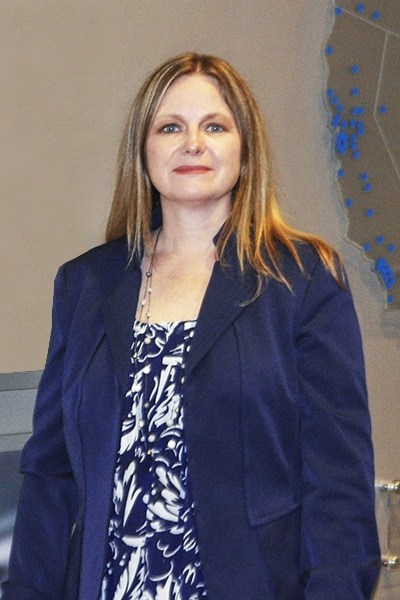Apria Healthcare’s home delivery of medical and respiratory equipment fills an important role in enabling its patients to improve their quality of life. As with most areas of healthcare, however, ongoing industry changes were impacting company operations. Business volume increased at the same time that health insurance providers were demanding shorter time frames for deliveries. This was because the company had transitioned to centralized customer service and dispatching functions that ultimately resulted in an influx of same-day deliveries that local branches could no longer reschedule or reprioritize.
Issues began to accumulate as customers posted negative reviews online about deliveries arriving very late at night; delivery technicians expressed dissatisfaction with schedules and overtime; turnover rates increased; recruiting became more difficult; vehicle collisions were increasing; and overtime was at an all-time high—averaging 485 hours per driver annually in 2017—a total of about $5,000 per driver.

This perfect storm made Kate Willmunder, vice president of employee relations and HR compliance, and other executives acutely aware of how widespread these concerns had become.
“Our delivery technicians were struggling to make the time necessary to properly set up equipment and instruct patients in its use while still meeting their delivery windows,” Willmunder says. “Because local branches could no longer schedule or adjust deliveries, technicians were putting in more hours to complete the additional deliveries.”
In response, Willmunder helped launch DriveWise, a cross-functional corporate initiative to improve delivery technicians’ experience and patients’ quality of service. At a brainstorming session, participants from human resources, safety and risk management, logistics/operations, training and development, fleet, transportation safety management, and the Logistics Center of Excellence dispatching center (LCE), reviewed the available data and identified the major areas that needed improvement.
To verify its findings, the DriveWise team surveyed its 950 delivery technicians across 48 states. In addition to scheduling, compensation, and recognition, questions covered topics like road safety, personal protective and lifting equipment, and in-cab technology. Some of the findings were surprising—such as technicians feeling that in-cab technology was more distracting than helpful. Feedback from the survey was incorporated into plans for comprehensive upgrades and improvements.
Compensation reviews, which, according to Willmunder, were overdue, resulted in specific strategies for various markets, such as higher salaries where recruitment and retention were difficult. The company also hired recruiters to assist general managers with sourcing and hiring new technicians.
“We’re working very hard to instill a culture of safety. We care about our drivers and their well-being and want them to go home safely to their families every day.”
Capacity planning, driver schedules, and delivery management has also been improved. LCE software now provides local branches with real-time visibility into the time sensitivity of orders, order status, and technician routing. Options are available to adjust delivery times, send products by third-party couriers, or direct ship, when appropriate. Customer service and LCE staff also receive training to better determine which orders are truly time sensitive and to improve the predictability of route scheduling.
More efficient Department of Transportation compliance strategies have been implemented to reduce the time technicians spend on tracking and documentation. Company fleets have been reconfigured to include only noncommercial vehicles (which are not subject to Department of Transportation requirements) at certain locations. As a result, driver daily logs required to comply with DOT Hours of Service requirements are no longer needed at 92 of the company’s 350 branches. This has also eased recruiting efforts at those locations because a commercial driver’s license is no longer required.
Perhaps the most significant changes are safety-related. Distracted driving has been reduced by LCEs sending fewer and shorter automated alerts to technicians. They now receive detailed delivery instructions only after arriving at their destinations. The company has also modified its PACE collision prevention program to include proper use of in-cab technology and has created a new market operations support trainer position to help manage technician training.
“We’re working very hard to instill a culture of safety,” Willmunder says. “We care about our drivers and their well-being and want them to go home safely to their families every day.”
Drive, a new monthly newsletter, helps reinforce the company’s message. It highlights desired best practices—everything from the use of technology, safe driving, and vehicle inspections to defensive walking, proper use of lifting equipment, and weather-related safety. The DriveWise team is also looking at vendors for high-top boots to provide technicians with additional ankle support. Apria has even instituted reimbursement for parking tickets in some heavily congested cities so that technicians can avoid legal parking spots that may require them to carry heavy equipment for longer-than-reasonable distances.
These changes are starting to produce meaningful, positive results. Overall technician employment satisfaction ratings are improving and positive reviews are beginning to be posted online; overtime hours are steadily decreasing; costs associated with vehicle collisions have decreased; and the time to identify and onboard new recruits has been reduced.
Additional improvements are also underway. Willmunder is leading the DriveSafe initiative to discover what concepts have the most resonance with driving-related employees nationwide.
“A key part of making successful improvements was getting anyone associated with the logistics function deeply engaged in developing solutions,” Willmunder says. “By listening to their creative ideas, we expanded our concept of what was possible as part of a culture where safety is top of mind at all times.”

